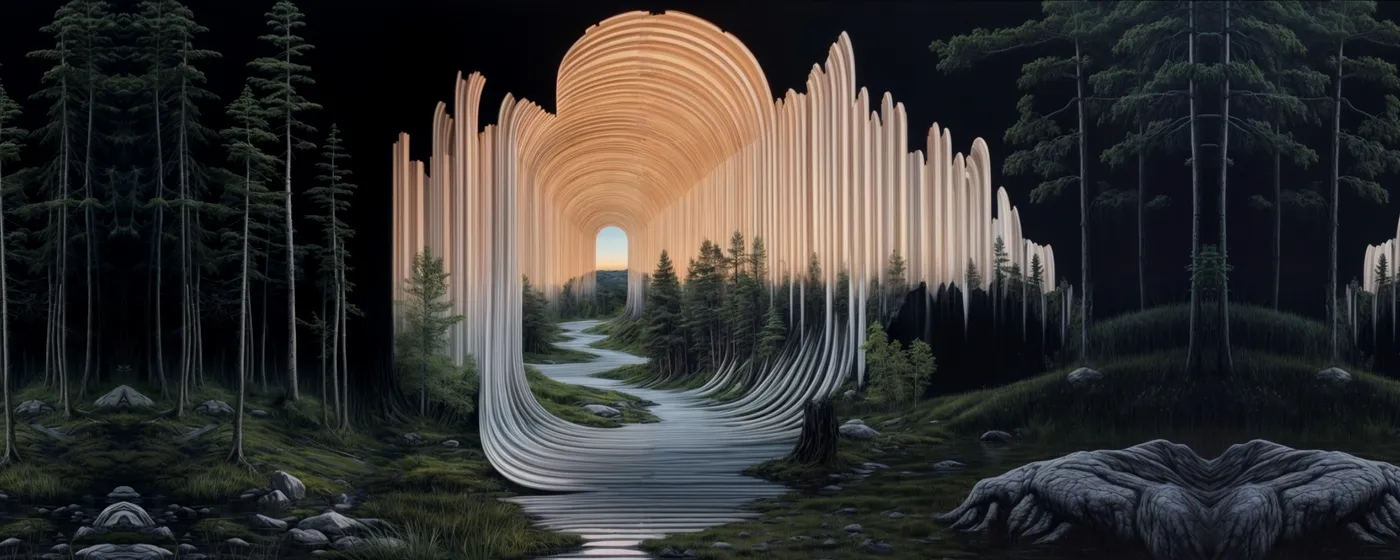
Un/Frozen Сities, Un/Seeable Sound
Schelling once observed that architecture is music in space—a kind of frozen melody. Madame de Staël, in her novel "Corinne", likened the architecture of St. Peter’s Basilica in Rome to an uninterrupted and fixed composition. Even Goethe described architecture as frozen music, writing: "I know-not-how streams from the airy tones whilst they move; all becomes melody. The columns, even the triglyph sounds: I believe the whole temple is singing." There is some truth to this idea. One might see in architecture a parallel to polyphonic music, where the four tiers of a structure correspond to vocal ranges: the base as bass, followed by tenor, alto, and soprano at the highest level. However, this remains speculative. A more precise connection between architecture and music might be found in the laws of perception—both auditory and spatial. Just as a building’s weight should be grounded at the bottom and lighten as it rises, a polyphonic score often follows a similar logic: lower voices carry sustained, substantial tones, while upper voices are detailed, ephemeral, and light. This is more than just an analogy; architecture and music, though one is silent and the other invisible, intertwine in our perception. We "see" music and "hear" architecture by association. A recent study from the Amsterdam Academy of Architecture, "Music, Space, and Architecture", highlights this connection. Both architecture and music emerge through stages of composition, shaping environments—whether in the virtual space of a drawing or the structured flow of a musical score. Unlike other art forms, both remain deeply tied to their initial abstract origins, existing first as pure form before external forces shape them. An architect envisions a structure, sketches, and refines it, much like a composer shaping a piece through notation and experimentation. This shared process of development—through sketches, symbols, and iteration—links the two disciplines. To begin this selection, let’s close our eyes—what do you see? Eyes wide shut! Listen to the world around you and transform sound into vision. Sound has weight, scent, and size. This is precisely the experience captured by Alëna Korolëva in "Naples", where the city becomes visible without ever opening your eyes—you feel it rather than see it. Can you recall the sound of your own city? Music always has form, and its presence is tangible. Francesco Fabris, in his installation "KRK SOUNDSHADOWS*" creates an interactive sound map of Krakow, where visitors can move their hands above a map and experience different sonic landscapes of the city’s districts. Even ruins and forgotten places carry their own voices—like Atlantis, singing from beneath the sea. Ryoichi Kurokawa, in "s.asmbli / subassemblies", explores the superimposition and reconstruction of decay, dynamically shifting perspectives between nature and human-made structures, between abstraction and concrete reality, between destruction and renewal. Rhett Tsai, in "Silence, a Drone", brings forth the voices of an imagined smart city, where digital avatars recount human dilemmas intertwined with urban life. Meanwhile, Rio Molinengo, in "ME PEGO MAL LA SIESTA", dives into his own perception of the city, exploring how it shapes and defines him as a citizen. Finally, Zeno van den Broek’s "Forming Folds" installation reflects the fragmented perspectives of digital space, physically rotating screens and merging the aesthetics of broken displays with images of empty facades. His work echoes Georges Perec’s poetic writings in "Species of Spaces", which examine the philosophical essence of our existence within space itself. Thus, architecture and music continue their dialogue—one shaping our built world, the other resonating through it. Un/Frozen cities, Un/Seeable Sound.






